From Disneyland to dispensaries faster than you can say “Magic Mountain”.
Architectural design firm The McBride Company, headquartered in Vermont, has created everything from restaurants to hotels, theaters, casinos and most notably over the last two decades, its been the sole design ambassador for Margaritaville. Now the firm is lending their eye to a whole new world: cannabis retail shops.
An expert at creating imaginative, impressive storylines, Johnnie Rush is the chief business innovation officer for the firm, with an equally impressive resume. He used to work as Vice President of Imagineering for Disney.
Rush has made it his mission to transform the architectural frontier of cannabis dispensaries in the same unique, transporting way. Transporting how exactly, you ask? Imagine pushing a button on a fortune telling Mystic Pineapple which then produces a note telling you which cannabis item you should buy.
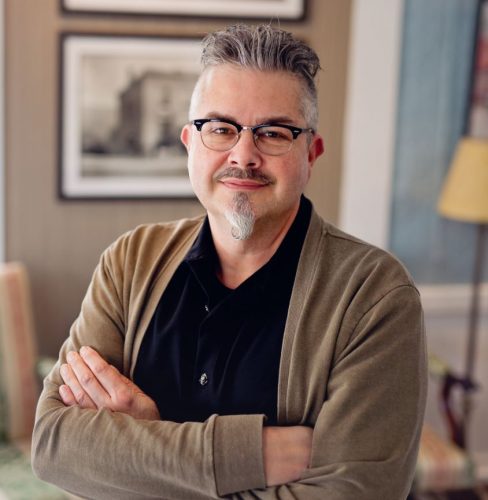
The Cannabist: How long have you been with the McBride Company?
Johnnie Rush: You know, it’s almost exactly a year. It’s great and I’ll tell you why: Pat McBride started off as a musician 30 years ago. He had a very illustrious music career. When he started the McBride company, his philosophy has been to not just look at the design industry as a design business, but he looks at it as we all do, through the business perspective.
McBride is actually the co-owner of a lot of the concepts he’s started. For the past 20 years, we have been the design ambassadors for Margaritaville. Starting with the first location, it was kind of an attempt to take a drinking song and turn it into a place. It’s grown to just this gigantic empire, burst out of this conversion.
You worked as Vice president of Imagineering for Disney. What are the elements you brought from your work in that sort of experiential-meets-architectural industry, to the cannabis space?
Rush: Well you know, it’s interesting because in Imagineering, we create the suspension of disbelief. It’s in essence the same thing; telling a story that creates an emotional connection.
When you establish an emotional connection with the consumer, you create a relationship. We’re applying the same line of thinking to the cannabis industry — here’s a real new industry that’s always kind of operated in the shade, not quite legal, sketchy, even when dispensaries were legalized.
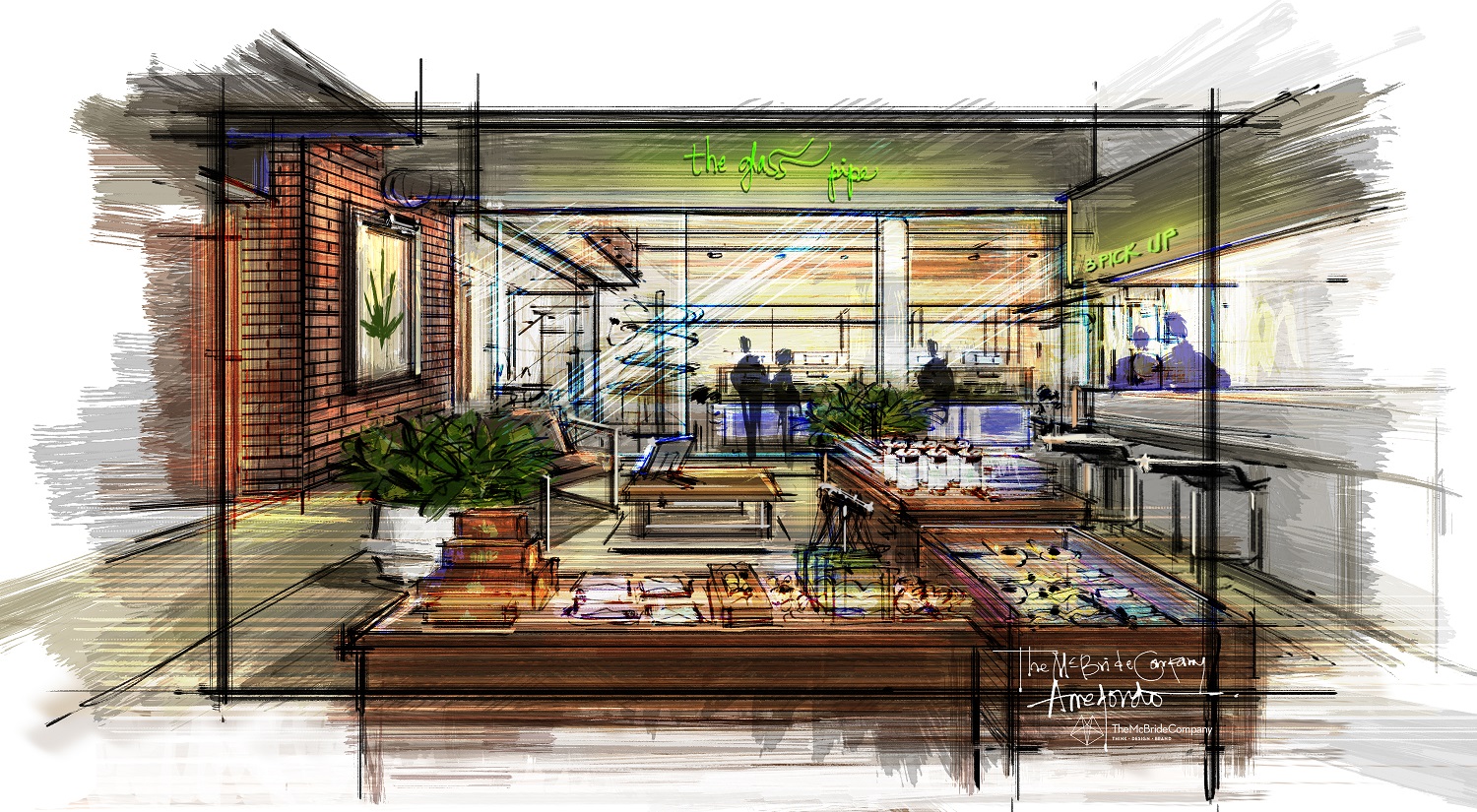
Your goal was to break existing perhaps negative stereotypes of cannabis retail spaces. What are those stereotypes, in your opinion?
Rush: It’s usually a space that feels temporary or not inviting, not a space you should be. These kind of back-of-house operations moved to the limelight so through that, there’s consolidation. Suddenly every dispensary is going to be competing on just two things: their brand and the relationship they have with the customer. The brand is more than just packaging and logo, a brand creates an environment — a visual experience you tell through different stories, through customer service, through the design of the space. And then, how am I leveraging my social media tool kit. It’s great marketing.
When companies come to you and ask for help, what current stores in other industries will they point to or explain as an example?
Rush: It’s not about emulating someone else — that’s kinda the easy way out. People will think, “we want a high-tech store,” and everyone thinks Apple. As minimalist as Apple stores appear, they spent tens of millions of dollars to create the perception of the brand.
For cannabis retailers, it’s a bit of a challenge. Everyone needs to be educated — even current consumers — about cannabis, because the tech is always changing; the strains, the products, concentrates, butane versus ice bath. It’s constantly in flux. Which is a good thing — it means more diversity of products. But for the consumer, a big part of what that retailer needs to do is to create an environment that speaks to those questions.
Some cannabis retailers say, “we want an Apple model, sleek and high tech.” It’ll be a short term win — without the story to back it up or the branding to explain why, it won’t make any sense.
Why do you think the retail space has been an afterthought for some cannabis businesses, when will it stop being an afterthought?
Rush: That’s going to happen really soon. The reason it hasn’t happened yet is that to open your doors wide you need to spend money creating a brand and designing a space. Suddenly, when you look at the exponential growth of dispensaries, it’s changed expectations. People see the importance of having a specific brand. Now there’s competition, in Denver alone there are nearly 400 dispensaries.
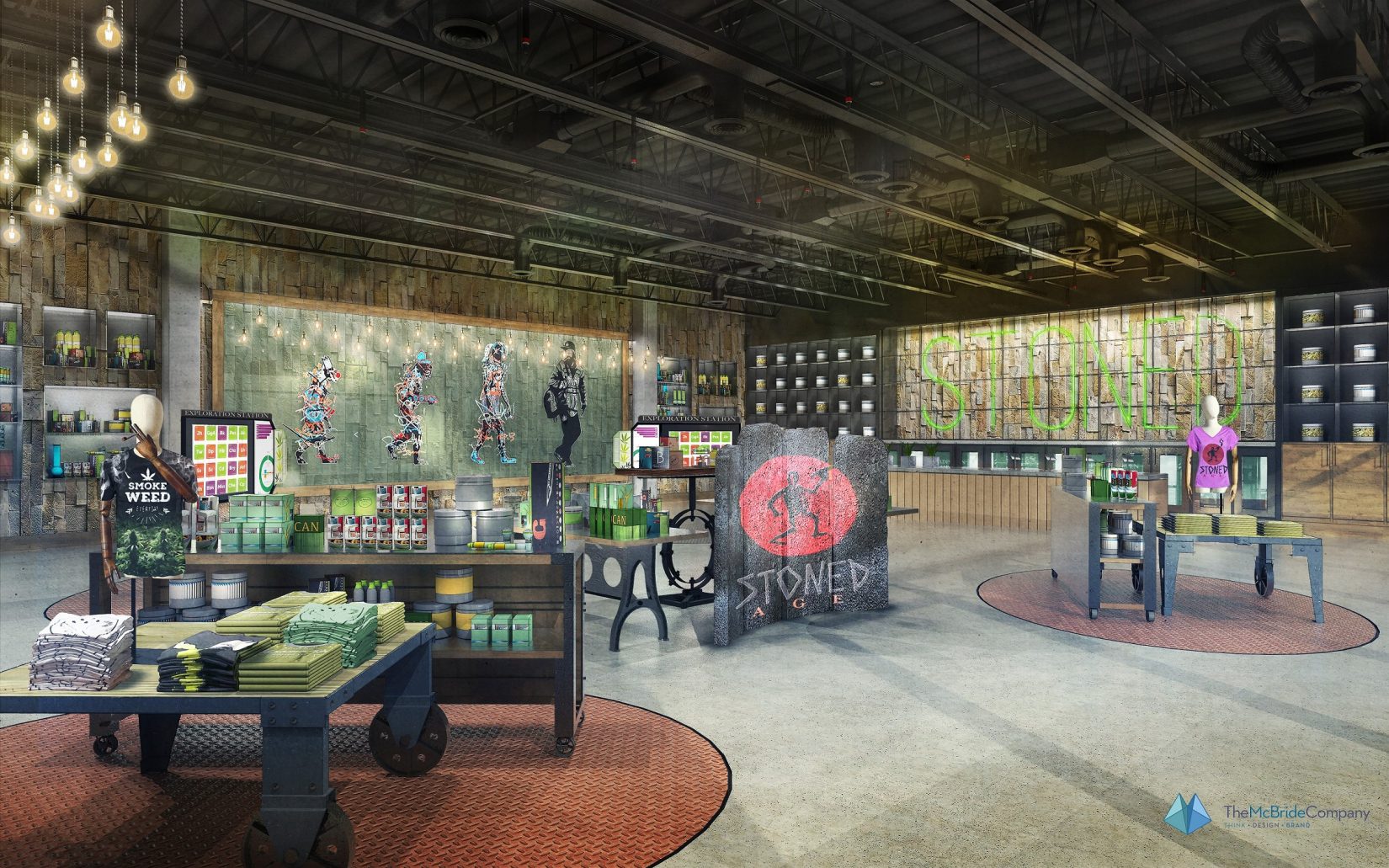
They’re all trying to capture the same consumer. The [dispensaries] that are fun, the ones that have created a social network and maintained this relationship win. I don’t mean just pushing sales, but creating a dialogue where you’re engaging with each other. When that happens, why would [a consumer] go anywhere else? Once they have a favorite brand, you drive as far as you need to go to get there.
The McBride company is known for these transporting spaces, like Margaritaville for example. What dispensary experience that you’ve designed capture that same idea?
Rush: Some of the images you’ve seen are just a design exercise trying to translate brands or attitudes into a physical environment.
The concept called T.H. See comes up. It’s a very gentle, nurturing feel, calm, and educational. Through the Stoned Age concept, we’ve got this mainstream ideology, it’s as reliant on products and merchandise as much as it is on the cannabis products.
How do you make a retail space feel “safe”? What other emotions/feelings are people invited to experience?
Rush: Well, safety starts with the rules and regulations, just from a planning perspective, you have an entrance lobby that needs to be secured from the retail. Is it medical, recreational, both? Once the logistics are out of the way, then it becomes use of color, tool, texture, lighting, graphic, that tells a story of the brand.
In Florida, a company called Grow Healthy wanted to project the idea that they control the product from start to finish. The design for that is starting to become very earthy, natural, the idea that you’re walking into a comfortable space that feels safe. It’s fun, part of it is a museum part of it is a retail space.
You have size, as well — a small spaces versus a cavernous area that you feel exposed. With that, you change the temperature of the lighting from a cool lighting to more of a warm lighting.
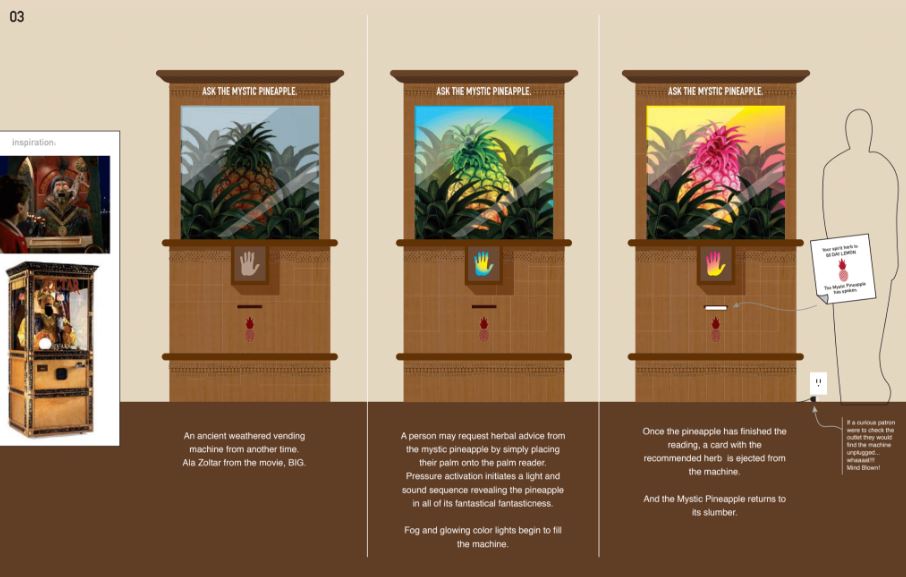
Tell us more about the Pineapple Express/MJ Business Consultants’s space in Los Angeles. What was the company’s “view-master wall” and the concept behind it?
Rush: Pineapple Express is an attainable luxury, indulgent. The idea behind the brand is this retro storyline, so all the elements and colors and textures were lifted from the old luxury resorts in Hawaii, Waikiki. It’s subtle but you see that in the materials.
The View-master wall was a very novel way of taking the same thing that everybody does, slapping an LED screen on a wall, but we wanted this to be very experiential. So the stories; the strains; and explanations of concentrates, the differences between indica, sativa — all of these educational aspects are answered through the View-master. You flip through and suddenly you have this super cool interaction.
How many cannabis spaces have you designed to date?
Rush: Well we started with Pineapple Express and that was actually a couple years ago, [owner] Matt Feinstein realized before anyone else, that if he could create a sustainable brand he could duplicate it in several locations and get a jump start on recreational cannabis in California.
We got a lot of exposure from Pineapple Express at cannabis conferences and canna-cons. Suddenly, we started to build this community of people who needed brands. Now, we’ve created 12 different dispensary locations.
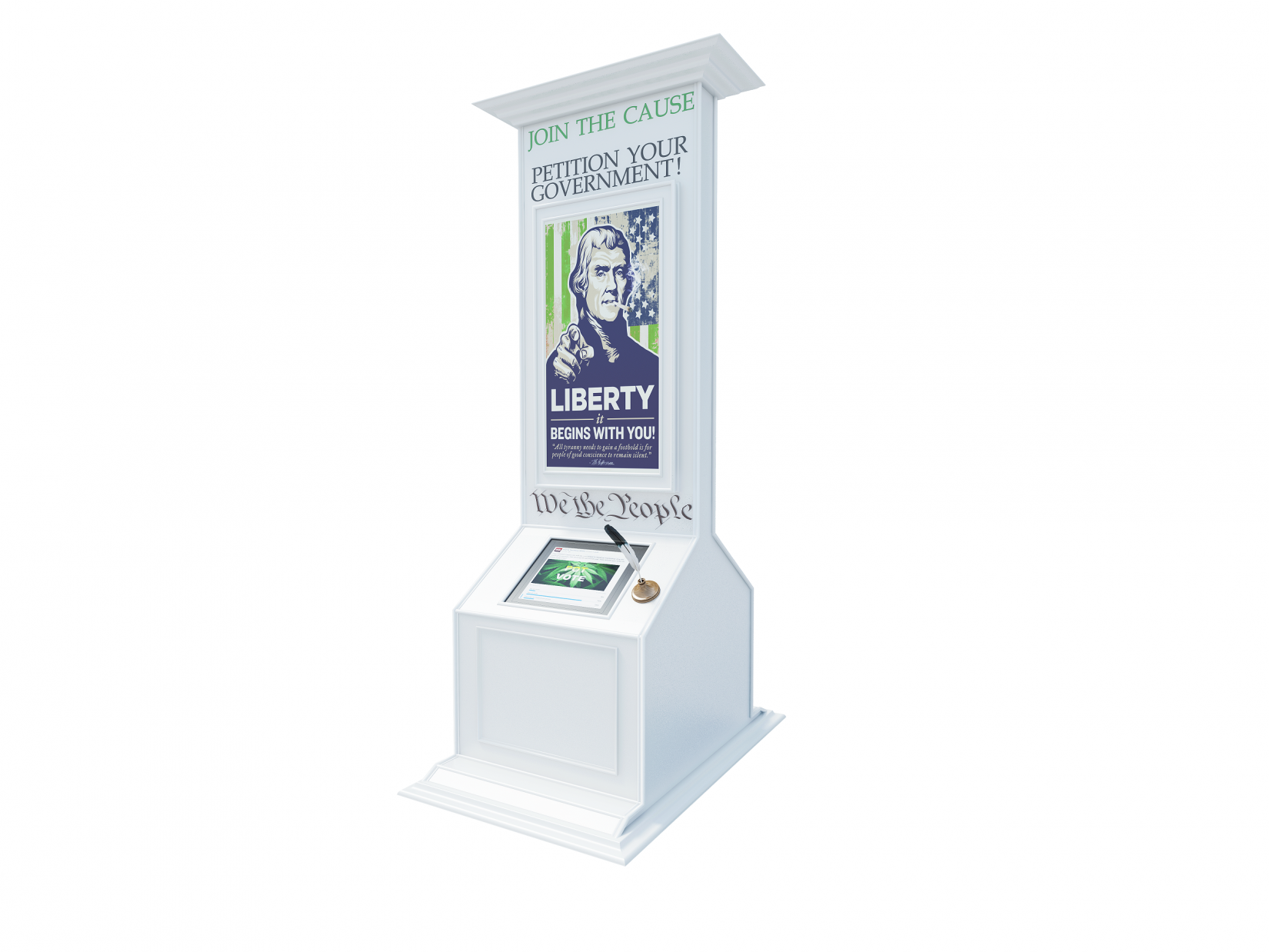
We’re showing renderings and artwork for the East Indica Company, Stoned Age, T.H. See, The Glass Pipe. Any elements in these spaces that you are working on right now that you are particularly excited about?
Rush: They all have something unique and interesting about them. The Glass Pipe is service-based — packaging and dispensing technology without the use of human hands. Once you kinda know what you want, you don’t have to wait in that line again. We’ve created this online ordering system where you kinda bypass the wait.
The unique part of [The Glass Pipe] is when you walk in and you input your info, a robot in the back of the house packages, dispenses, puts it in a tube, and shoots it up to the front. The labor now is focused on creating the relationship with the consumer and not packaging the order.
The over arching story is, they all have very consumer-driven design that can be leveraged not only with the marketing program, social media platform, but also packaging, if done the right way.
How much does your design cost?
Rush: It’s kinda tough to give an average cost — there are so many variables.
They may not know how much it costs, what the process is worthwhile, so we put it together and they can decide to invest in a design effort or not. It’s not an inexpensive process to take an idea and a process and to convert that into an environment. Into a design, graphic design, industrial design. Anyone that kinda has gone thru the process and its done, just is thrilled.

